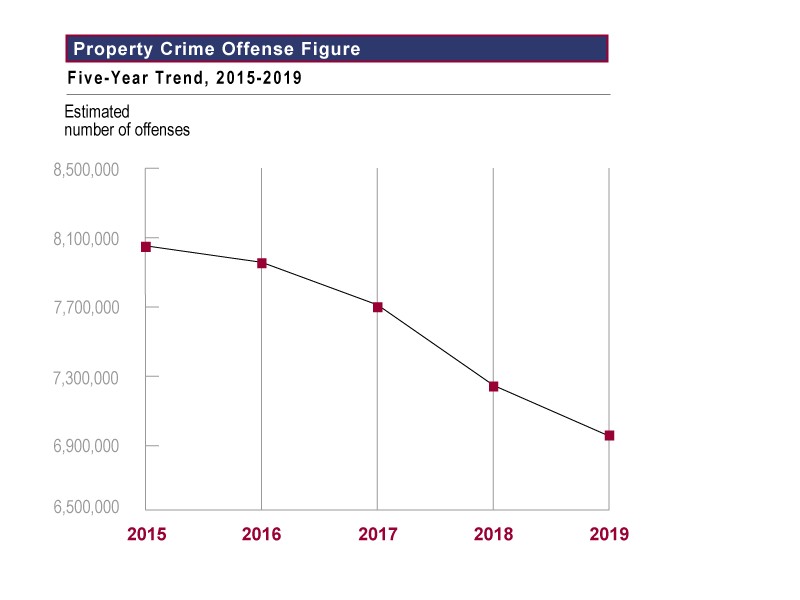Being the victim of a robbery is a very real fear for many people. It makes sense: People want to feel safe in their homes, so stories in the news about homes being robbed or people being assaulted during the commission of a property-related crime in their homes are terrifying. These stories are not just in the news. Because they represent such a universal fear, all sorts of media often tell these stories.
People being held hostage or hurt during a home invasion are the basis of a lot of television shows and movies, which range from more light-hearted takes like the Home Alone movies to the terrifying Last House on the Left. However, people are often confused about the different types of property crimes, which also represent everything from joyriding to identity theft, and why all thefts aren't robberies.
Basic legal terms
Some legal terms apply to most criminal charges and various types of crimes.
A charge is when a person is formally accused of a crime.
The defendant is the legal term for someone who has been charged with a crime.
A conviction occurs when the defendant has been found guilty of the crime they were accused of committing.
There are both state and federal-level crimes. Home robberies are state charges, but anything involving a federal agency like the IRS is typically a federal charge and is therefore tried in Federal, instead of the state, courts.
There are also two types of crimes. Misdemeanors are less serious, whereas felonies are more serious and usually result in at least a year spent in prison for anyone convicted of a felony.
There are also levels of charges related to theft. For example, petty theft crimes are ones where the money or goods stolen are valued at less than $1,000. Grand theft occurs when the value of the goods or money is more than $1,000. Prosecutors are attorneys who are in charge of convicting defendants.
- Glossary of Legal Terms
- Petty Larceny
- Defendant
- Comparing Federal & State Courts
- What Is The Difference Between A Misdemeanor And A Felony?
Violent crimes
Some types of property crimes are also classified as violent crimes. Armed robbery, for example, is when someone uses a weapon to conduct a theft of money or goods. Typically these charges are felonies that result in at least two years in prison.
Carjacking is when force, threats, or violence is used to take possession of a car and is also a felony offense.
- Quick Facts on Robbery Offenses
- The Sentencing and Punishment of Armed Robbery
- History of Auto Theft
Financial crimes
Financial crimes are a type of property crime. There are several different types, and typically they lead to serious prison sentences.
For example, check forgery is when someone forges another person's signature on a check. Check forging can result in up to fourteen years of imprisonment in some states.
Credit card theft happens when an unauthorized person steals another person's credit card information and uses it to make purchases.
Embezzlement happens when someone takes money or property that was entrusted to their care. For example, if a bank executive steals money from the bank's accounts.
Identity theft is when a thief steals personal information from someone to access their financial accounts, like their PIN or Social Security number. This crime can result in up to fifteen years in prison.
- What is Financial Crime?
- Financial Crimes Against the Elderly
- How Serious a Crime Is Credit Card Theft and Fraud?
Basic property crimes
There are several different types of basic property crimes. Breaking and entering is also known as burglary. This is when someone enters any home, business, or other space intending to commit theft.
Home invasions refer to burglaries where the thief enters a home.
Larceny is when someone takes the property of another person without their permission. Many don't realize it's different from robbery, which is when someone takes another person's property by using threats, violence, or other types of force.
Shoplifting is when someone takes goods from a store.
There are also several different types of crimes related to automobiles. Joyriding is a crime often committed by kids or teens, when they take a car they aren't authorized to drive.
Adults are more likely to be charged with Unlawfully Driving Away an Automobile, which is when someone drives away in a car they don't own and aren't authorized to drive.
- What's the Difference? Larceny Vs. Theft
- Burglary vs. Robbery: What's the Difference?
- Doorbell Cameras to Protect Your Home
- Comparing the Motivation of Auto Thieves and Carjackers (PDF)
Property crime statistics

The FBI prepared this graph which shows property crime rates from 2015-2019. During that time, the amount of property-related crimes in the United States decreased. This is part of a larger trend. Over the last decade, property crime rates have decreased regularly. Property crime has been decreasing since 2002. Twenty years ago 10.9 property-related crimes were reported. In 2018, there were only 7.2 million crimes reported. Larceny represents almost three-fourths of all property-related crimes.